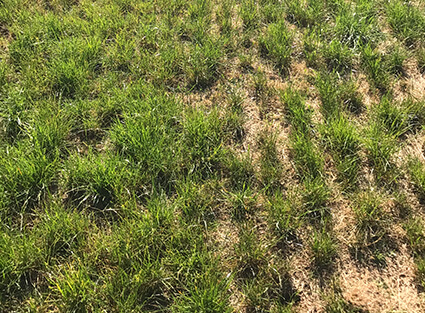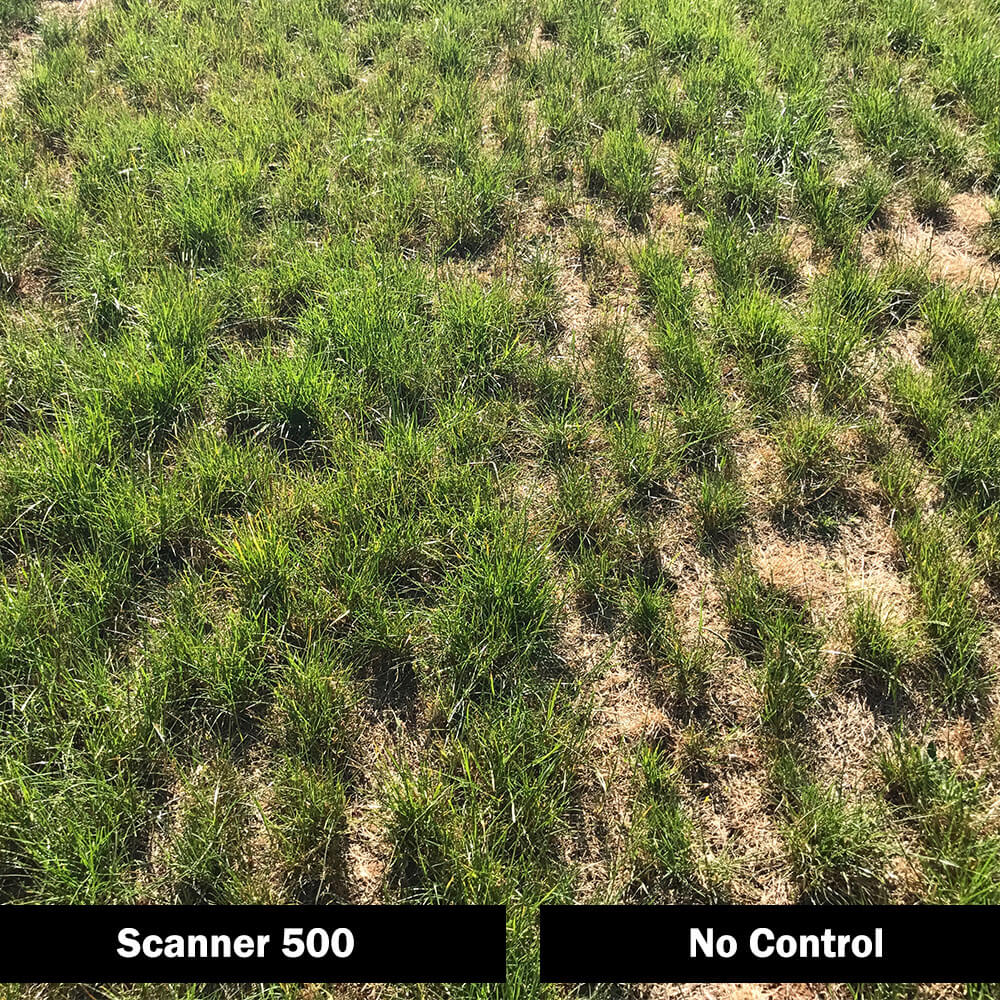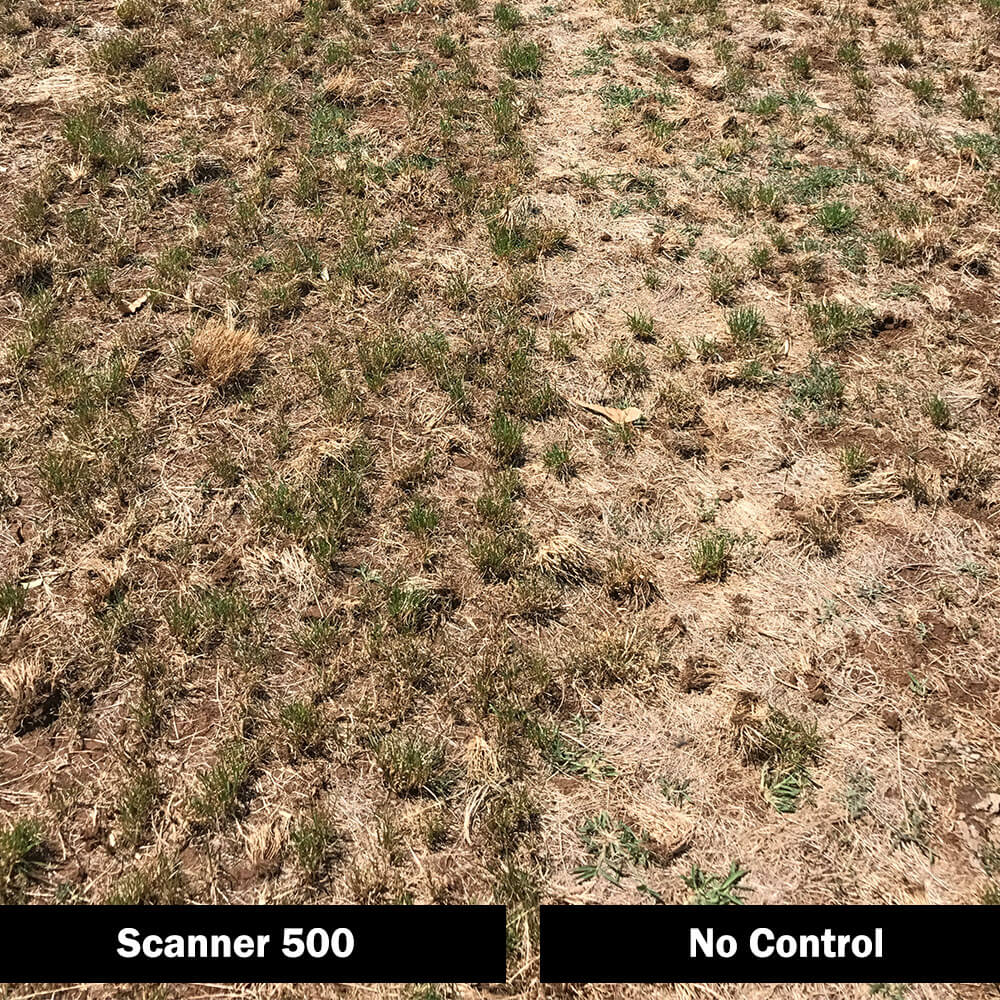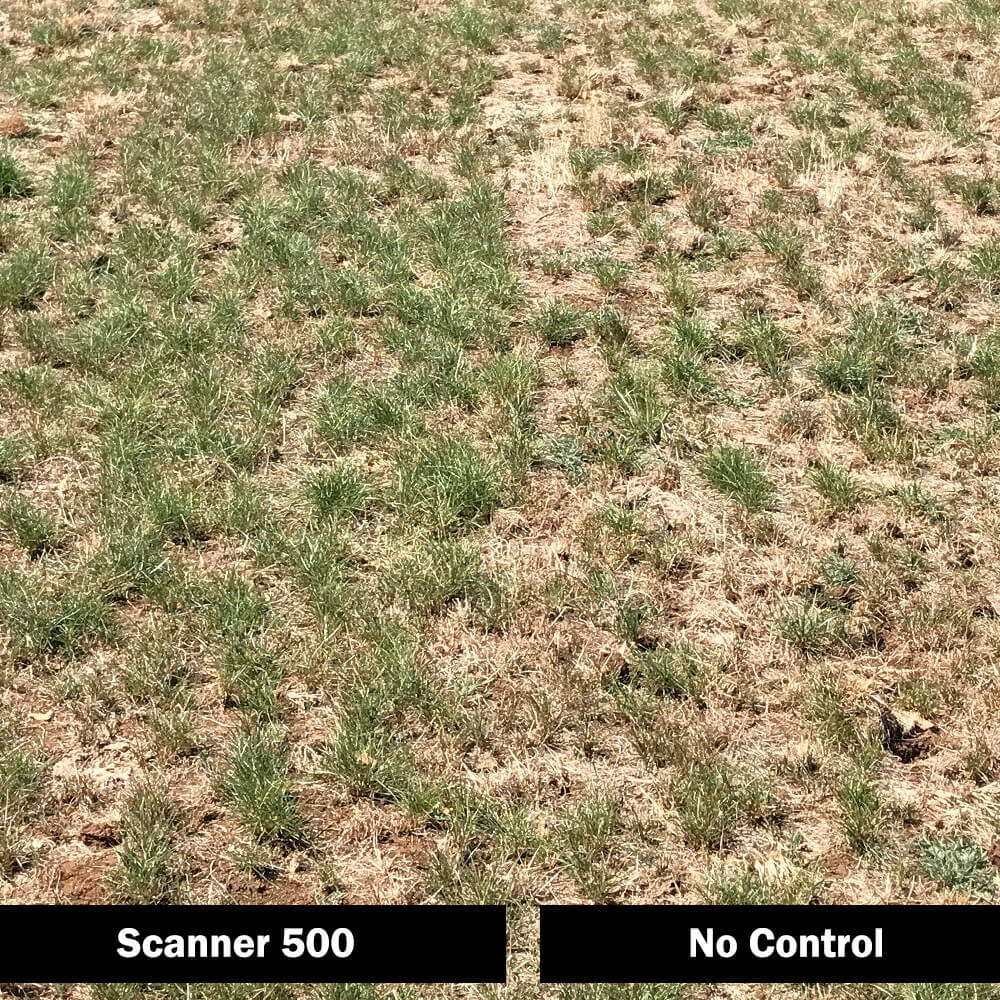As we move into late autumn and early winter, a range of winter grasses and broad leafed weeds begin to germinate in our pastures.
Light green in colour with tufted growth habit and seeding from late winter throughout spring and early summer, Poa Annual matures quickly and seeds profusely making them an agressive weed difficult to control. Grazing or mowing is ultimately ineffective in their control as they begin to choke up your pastures.
Preventing winter grass establishment is a key component in maximising the performance or your pastures. As you can see by the images below
WINTER GRASSES TRIAL
Using Scanner 500 herbicide, we trialed its effectiveness on winter grasses last season here at Larnder. As you can see there was a greater ryegrass plant population in the plots with Scanner 500 used (left below) compared to the plots (right below) which were impacted by Poa Annual. Preventing the winter grass establishment will improve the performance of your pastures.
Scanner 500 can be used with broadleaf weed control. As always if you are wanting to know more winter grass control give us a call (03) 5659 2314 in Gippsland or 0408 439 795 in the Western District.
Click here to find more about Scanner 500
DECEMBER 2016

FEBRUARY 2017
MARCH 2017
Scanner 500SC
Scanner 500 is a contact and residual herbicide, which controls a range of grass and broad leaved weeds. Recommended rates are only a general guide.
Click here for the full range of chemicals at Notman Pasture Seeds










